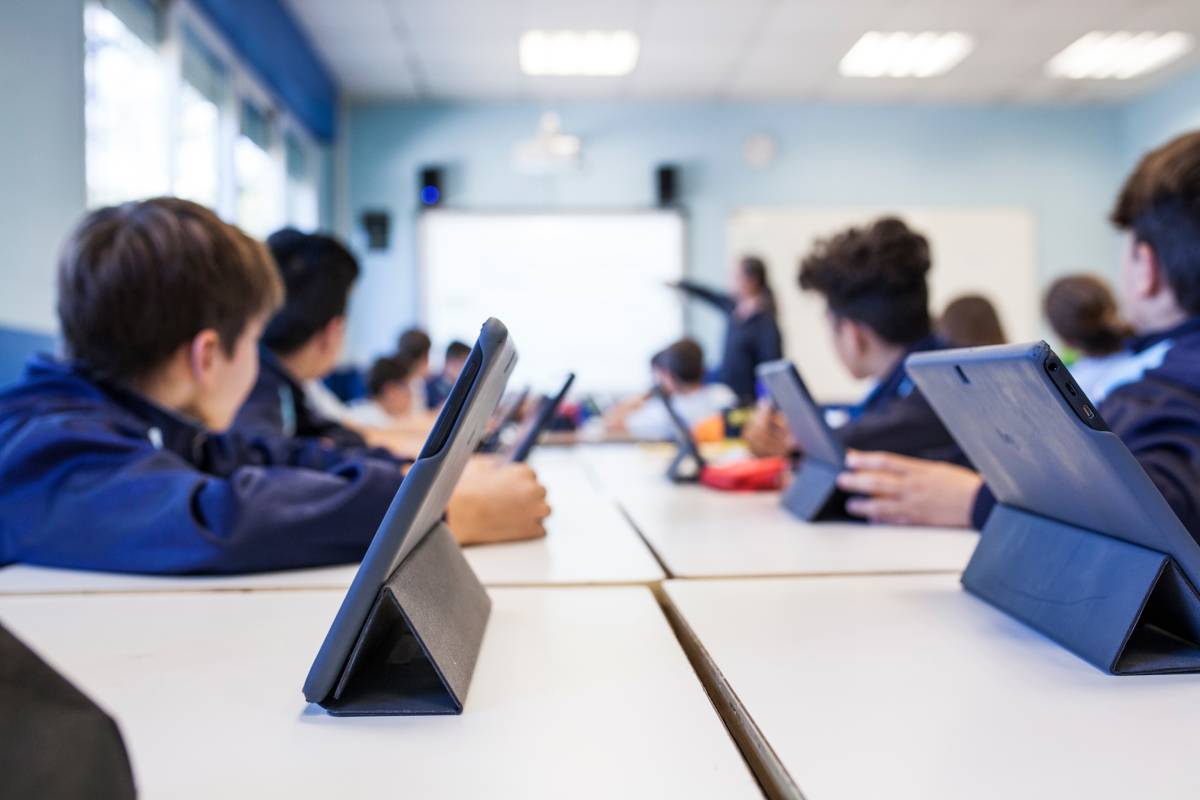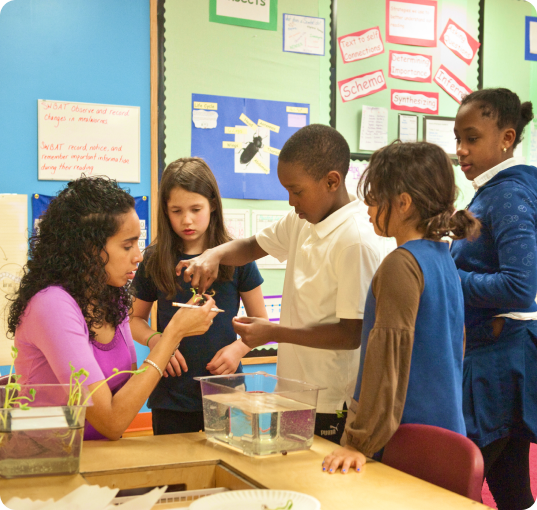Unlock Your Child’s Potential with Primary Science Tuition Singapore
Unlock Your Child’s Potential with Primary Science Tuition Singapore
Blog Article
A Comprehensive Guide to the Different Understanding Approaches in Key Science Direction
The expedition of varied learning methods in key scientific research instruction provides an opportunity for teachers to enhance student interaction and understanding significantly. By analyzing hands-on discovering methods, inquiry-based approaches, and collective methods, we can recognize effective methods that provide to various finding out styles.

Hands-On Discovering Techniques
Hands-on understanding techniques play a crucial function in primary scientific research direction, engaging trainees in active expedition and experimentation. These techniques permit students to interact straight with products and sensations, fostering a much deeper understanding of scientific ideas. By utilizing manipulatives, versions, and real-life experiments, teachers develop an environment where trainees can observe, hypothesize, and examine their ideas.
Such strategies not just boost comprehension but additionally cultivate critical thinking and problem-solving abilities. When trainees participate in activities like developing straightforward makers, growing seeds, or carrying out chain reactions, they are encouraged to ask inquiries and look for solutions via their own monitorings. This experiential approach assists to debunk complex scientific concepts, making them a lot more accessible and relatable.
In addition, hands-on knowing advertises cooperation among peers, as trainees typically operate in groups to carry out experiments or share searchings for. This team effort not only enriches their knowing experience but likewise creates essential social abilities. Inevitably, integrating hands-on strategies in main scientific research guideline promotes a lifelong love of discovering and interest about the all-natural world, laying a solid foundation for future academic quests in scientific research and past.
Inquiry-Based Understanding
Inquiry-based learning is an educational method that motivates students to ask inquiries, examine phenomena, and create their very own understanding of scientific principles. This method changes the focus from standard teacher-led instruction to a more student-centered experience, where learners take the campaign in their academic trip. By promoting inquisitiveness, inquiry-based discovering advertises much deeper interaction with the material, allowing pupils to check out subjects in a purposeful context.
In method, this strategy commonly includes hands-on experiments, monitorings, and crucial thinking tasks that straighten very closely with the scientific approach. Trainees are motivated to formulate hypotheses, layout investigations, and assess data, which grows essential abilities such as logical and analytical thinking. The function of the teacher in this framework is to promote exploration, guiding trainees with the questions procedure while urging independent idea and cooperation.
In addition, inquiry-based learning nurtures a feeling of ownership over the learning process, inspiring trainees to pursue understanding actively. This approach not just enhances understanding of scientific principles but likewise promotes a long-lasting love for learning, furnishing pupils with the skills required to navigate an increasingly intricate globe.
Collaborative Understanding Approaches
Joint understanding approaches equip pupils to take part in meaningful interactions with peers, cultivating a shared responsibility for their academic results. In main scientific research direction, these strategies encourage students to interact to explore clinical ideas, solve problems, and conduct experiments (primary science tuition Singapore). By getting involved in team activities, students can take advantage of varied viewpoints, enabling richer understanding and retention of clinical expertise
One trick facet of collaborative learning is the emphasis on communication abilities. Pupils need to verbalize their thoughts, pay attention actively to others, and work out concepts, every one of which are essential proficiencies in both academic and real-world contexts. This social interaction not just improves their understanding of clinical principles yet additionally advertises synergy and problem resolution abilities.
When trainees see the value of their payments within a group, they are more most likely to take possession of their learning trip. Generally, incorporating collaborative understanding techniques in primary science guideline grows a vibrant knowing environment that prepares trainees for future scholastic and social difficulties.
Modern Technology Combination in Science
The assimilation of technology in key scientific research instruction improves discovering experiences by supplying cutting-edge tools and sources that sustain numerous mentor approaches, including joint understanding - primary science tuition Singapore. Making use of electronic platforms, simulations, and interactive applications permits trainees to involve deeply with clinical concepts, assisting in a much more hands-on strategy to discovering
Virtual labs, as an example, allow students to perform experiments safely and efficiently, advertising inquiry-based learning. These tools can imitate real-world clinical circumstances, enabling students to visualize complicated processes that would certainly be difficult to replicate in a typical classroom setup. Modern technology promotes interaction and look here collaboration among students, as they can share searchings for and function together on jobs with on-line platforms.
Furthermore, multimedia presentations and instructional videos can enhance lessons by dealing with diverse understanding designs, making abstract principles extra obtainable. Data analysis tools additionally empower students to collect and analyze clinical information, strengthening crucial assuming skills. On the whole, the calculated unification of innovation in main scientific research direction not only enhances engagement however additionally prepares students for a highly sophisticated society, outfitting them with necessary abilities for future scientific endeavors.
Distinguished Direction Approaches
Set apart direction strategies are necessary for dealing with the diverse demands of students in key science education and learning. These methods make it possible for teachers to customize their teaching techniques to fit varying capacities, passions, and discovering styles within the classroom. By utilizing distinguished guideline, teachers can create a comprehensive setting that fosters involvement and improves understanding of scientific principles.
One reliable strategy is to make use of flexible organizing, which enables students to work together with peers at comparable skill levels or with varying point of views. This strategy motivates peer learning moved here and promotes critical reasoning. Furthermore, providing choices in assignments can encourage pupils, allowing them to select tasks that reverberate with their rate of interests while still meeting curricular goals.
In addition, integrating tiered assignments is an additional valuable technique. By creating tasks with differing levels of complexity, instructors can make certain that all trainees are properly tested, despite their effectiveness. Making use of developmental analyses to assess comprehending additional makes it possible for educators to change their educational approaches dynamically, making certain that each student receives the support they require.
Inevitably, carrying out distinguished guideline approaches in primary science education and learning not only improves student learning end results but additionally grows a passion for science, preparing pupils for future scholastic searches.

Verdict
In recap, reliable main science direction necessitates a complex strategy that incorporates hands-on knowing, inquiry-based approaches, and joint strategies. The combination of innovation and differentiated guideline further accommodates varied discovering designs, cultivating a setting for expedition and vital thinking. By implementing these strategies, teachers can boost trainee interaction and comprehension, inevitably supporting a long-lasting enthusiasm for science and inquiry. Such comprehensive techniques are important for developing notified and curious future scientists.
The exploration of This Site varied learning methods in primary scientific research direction presents an opportunity for teachers to boost pupil engagement and comprehension considerably.Hands-on knowing strategies play a pivotal duty in primary science guideline, engaging pupils in active expedition and trial and error.Inquiry-based knowing is a training method that encourages trainees to ask concerns, check out phenomena, and construct their own understanding of scientific concepts.Joint discovering approaches encourage trainees to engage in significant communications with peers, promoting a shared responsibility for their educational end results. Overall, incorporating collaborative understanding strategies in primary science instruction cultivates a dynamic knowing environment that prepares students for future scholastic and social challenges.
Report this page